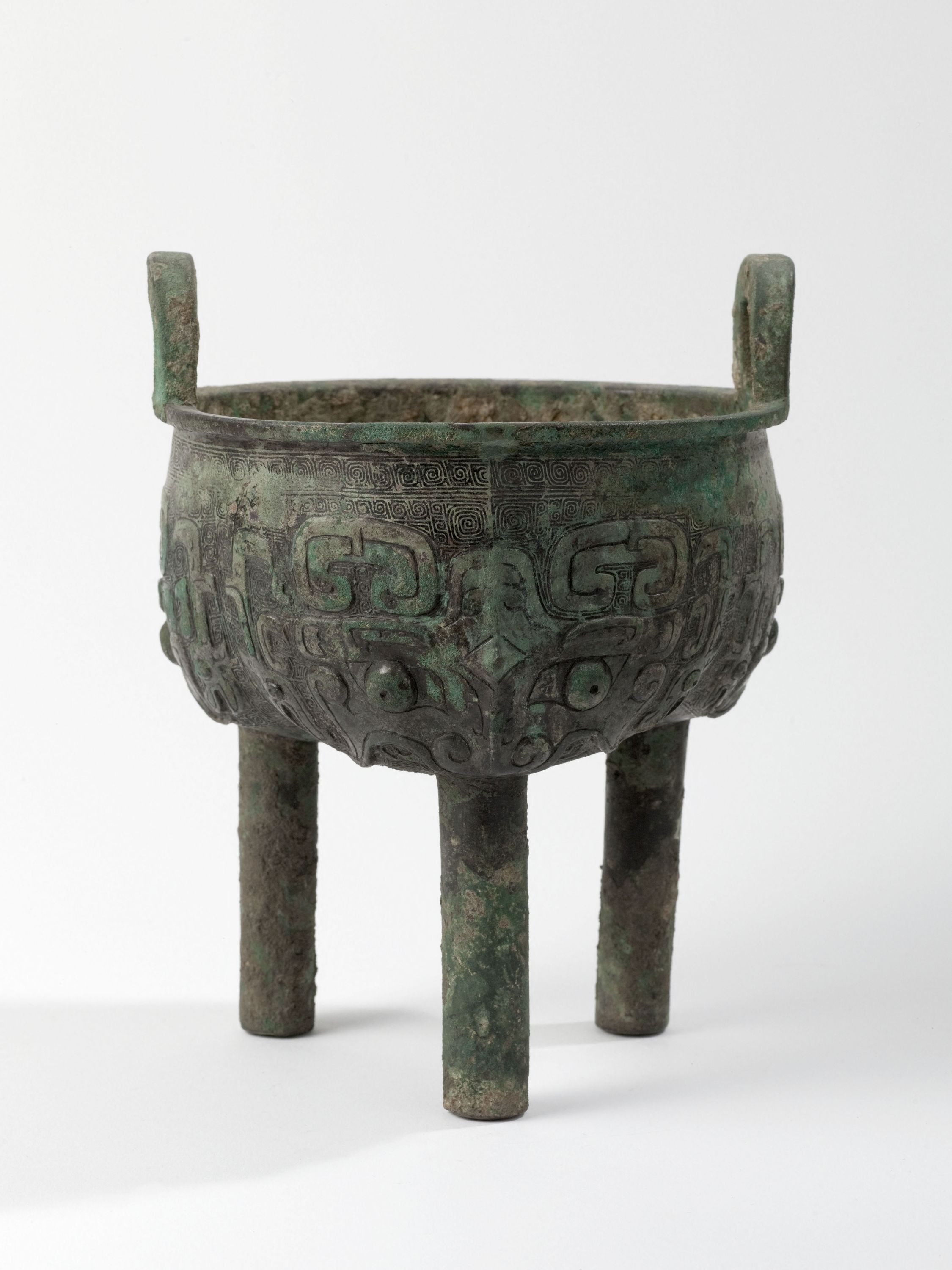
Vase liding 鬲鼎
Bronze, Fonte, Fonte au moule
Vaisselle et ustensile de cuisine, Vase, Objet religieux
Achat
M.C. 8419
Inscription: Gui, father of the Ju clan (?)
A liding is a particular type of tripod vessel combining the characteristics of the li, which has three ovoid cavities ending in short hollow legs, and the ding, a round-bellied vessel standing on three triangular feet. The li take the form of certain ceramics very common in the Neolithic period. The li, ding and liding were used to contain meat and fish. Ding and liding are the most widespread types of ancient bronzes, in use up to the Han period.
The Museum Cernuschi liding, which features a large taotie mask flanked by two vertically positioned kui dragons above each of the three feet, belongs to a particular large group of bronzes dating from the late Shang and early Western Zhou dynasties. The monumentality of their monster faces creates a fine decorative effect.
